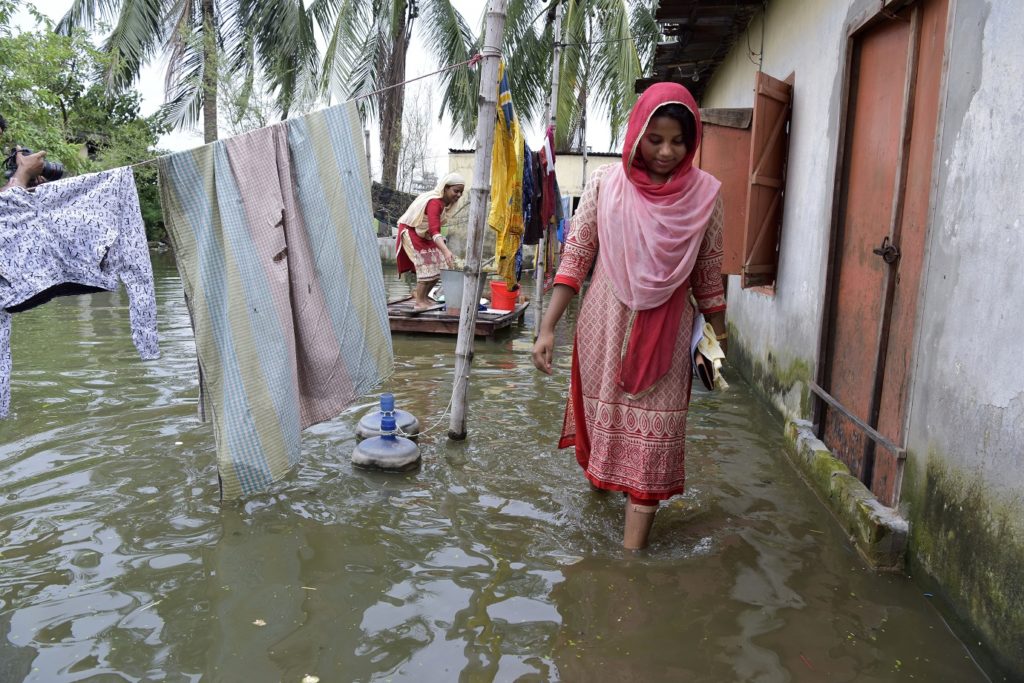Natural disasters, which are becoming more prevalent because of our changing climate, affect men and women differently. In fact, women are disproportionately affected by disasters. Girls and women are now a staggering 14 times more likely to die in a disaster compared to men.
So far in 2021, there have been global surges of unprecedented weather patterns that are alarming climate scientists. Devastating floods ravaged Germany; extreme heat waves and monstrous fires were recorded in the US; unprecedented rainfall created flash flooding throughout Bangladesh and land sides hit Panama.
These few instances add to the collection of mounting numbers of extreme weather events which are witnessed across the globe. Between 2008 and 2017, 84 percent of all recorded disasters were climate-related. Compared to the period between 1980 and 1999, this proportion has almost doubled over the last two decades.
So how does this impact women differently?
Seventy percent of the world’s poor are women. This is a fundamental factor leading to higher mortality rates when compared to men during a disaster.
Worldwide, because women are statistically poorer, they have far limited available financial resources, such as resilient housing. Women typically have limited financial safety nets too, and often less education to seek employment to rectify their collective situations. These social vulnerabilities explode during and after a disaster, ensuring a cycle of poverty which can become generational.
The effects of hazardous situations on female populations are further compounded in low and middle-income countries. With the gender-related division of work seen in many situations, women are more dependent on accessing resources that may be impacted by climate change.
In many resource-scarce countries, a woman’s everyday routine is dramatically impacted by climate change. For example, with the global increases in thermal temperatures, many low-income countries have had a huge reduction in accessing water. Water scarcity forces women to walk further from the safety of their homes to collect water, making them increasingly susceptible to sexual assault and rape. In Bangladesh, which is considered the epicenter of climate change, the World Health Organisation has estimated that in 8 out of 10 homes, women are exposed to the risk of harassment, sexual assault and rape when collecting water.
Women remain susceptible to poor health outcomes, violence and inequalities in all stages of a disaster: from preparedness through to response and recovery. In low and middle-income countries, women still have less access to education, especially concerning survival skills such as swim safety, this means that they are unable to easily flee in instances of rising floodwaters. Women can miss the early warning systems, as they traditionally are homebound caring for their family members, reducing their disaster preparedness and response times and increasing their chances of death. That is one of the major factors explaining why 90 per cent of the 140,000 people who died during the 1991 Bangladesh cyclone were female.
At the time of any disaster, women have a statistically higher instance of forced marriage, they are exposed to sexual violence and can be required to engage in transactional sex for financial coping strategies. After the 2004 tsunami in India for example, nine out of ten women affected by the disaster had experienced sexual violence within two years of the incident. After the 2011 Christchurch earthquakes, New Zealand saw a 40% rise in intimate partner violence in rural areas.
The social implications of climate-related disasters are as severe as the weather event itself. For Australia, a country where the visible effects of climate change are seen from yearly floods to extreme fire events, our carbon emitters are still one of the biggest per capita in the world.
The longer that we continue to deny the effects of climate change and delay our social responsibility to reduce emissions, the more lives that we endanger.
The unfortunate reality is that those who are creating the climate damage are not necessarily the ones who will have to bear the brunt of its impact.

